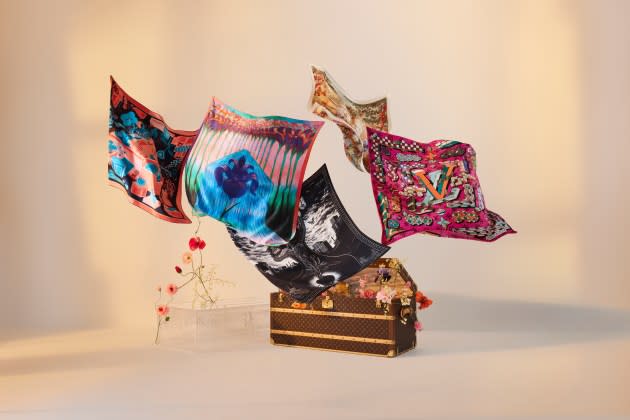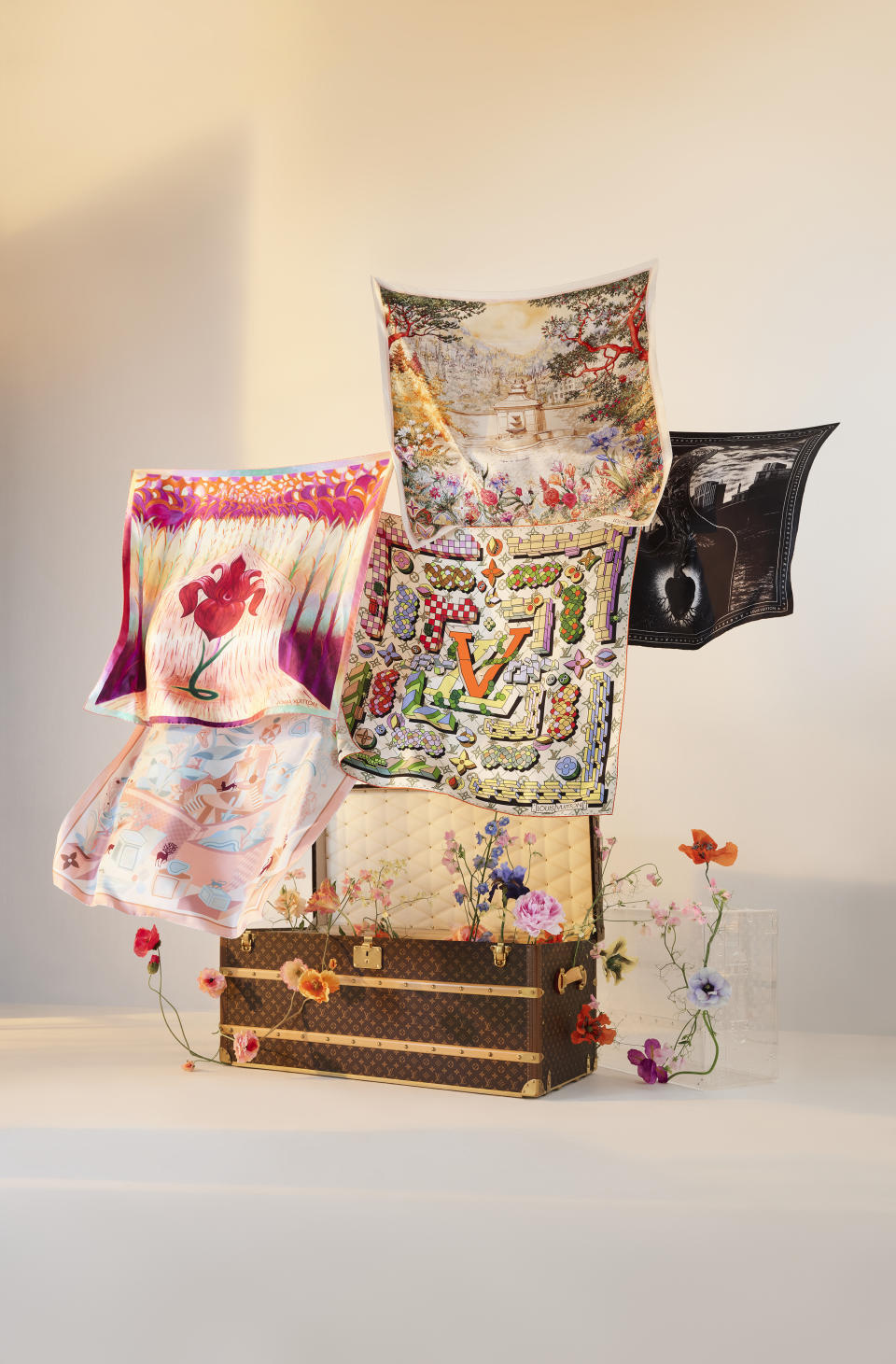Louis Vuitton Unveils Floral-themed Silk Squares Reimagined by Five Contemporary Artists

Louis Vuitton has teamed with a cohort of contemporary artists on a collection of silk scarves, or carré in French, which aims to bring new perspectives to the brand’s signature four-petal bloom that constitutes part of its monogram.
Hitting stores worldwide beginning Aug. 30, the limited-edition silk squares are designed by the German pixel-art collective eBoy; the Franco-Japanese-Spanish design duo Icinori; Italian artist and illustrator Lorenzo Mattotti; French graphic novelist and illustrator Nicolas de Crécy, and Swiss artist Thomas Ott. All of them previously collaborated with Vuitton on projects such as the brand’s Travel Book series.
More from WWD
The founders behind eBoy, Kai Vermehr, Steffen Sauerteig and Svend Smital, offered “Maze of Precious,” in which the LV logo sits at the center of a labyrinth filled with elements from the brand’s monogram pattern, including the rounded flower and quatrefoil, as well as bright pixelated vegetation, and playful, geometric insects.
Calling it “a hybrid object, both a garment and a piece of art, a canvas on display. When worn, only parts of the design are visible, and its orientation is unpredictable,” the eBoy collective said a maze structure is a perfect vehicle, as they aimed for something that’s “graphical, abstract, visually strong and confident from a distance, and magical and worth exploring up close at the same time.”

For Icinori’s Mayumi Otero and Raphaël Urwiller, their work “Malles Monde” is designed as a celebration of Vuitton’s trunk-making heritage.
“Louis Vuitton has a powerful history, an artisan devoted to their art, to the quality of their materials, but above all to packing, protecting, shaping, caring for objects to be transported, to be handed down.
Protecting each person’s inner world in trunks, bags and boxes so that, at journey’s end, when they come to the end of the road, opening those containers is a moment of light, an avalanche of tiny wonders,” explained Otero and Urwiller of their inspiration.
Mattotti’s design, “Iris Spring,” serves as a tribute to a flower found in the Art Nouveau stained glass at the Vuitton family’s historic home. De Crécy’s “Parfums de Méditerranée” depicting mountains, intricate representations of scent-filled flowers, and playful inventions based upon the monogram pattern was inspired by the gardens in Grasse, Provence, where Vuitton fragrances are created.
Ott’s black-and-white “Urban Flowers” design, meanwhile, presents a surreal imagination that transfigures flowers into symbols of the human spirit.
Ott confessed that the theme flower given by Vuitton was a bit of a challenge. “I normally avoid drawing flowers, it’s not so much my thing. But this is what’s interesting in this work. I have to leave my comfort zone. So I explore new themes, new possibilities,” he added.
Manufactured in Como, Italy, Vuitton’s silk squares have a history of collaborative projects that date to 1987, when leading artists at the time — including Arman, Sandro Chia, Arata Isozaki, Sol LeWitt and James Rosenquist — were invited to express their creative vision on a scarf for a project titled “The Silk Road.” Since then, Andrée Putman, César Baldaccini, Philippe Starck, and several others have designed for the brand’s silk square range.
Vuitton embarked on a new vision for silk squares in 2013 with Foulards d’Artistes, two collections of work by street artists including Os Gemeos and Retna. Today the full collection of artist-designed silk squares is on display in “LV Dream,” the exhibition at the brand’s headquarters in Paris.
Best of WWD


